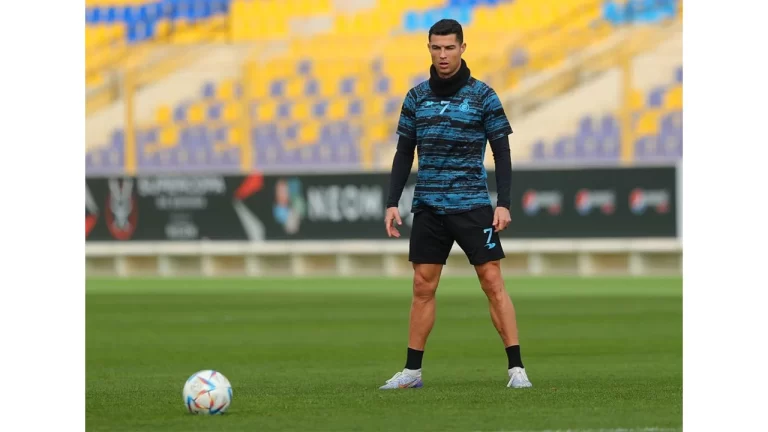What is an Obstruction Rule in Soccer?

Are you a soccer enthusiast looking to brush up on the rules of the game? Or perhaps you’re new to soccer and want to understand why certain calls are made during matches. Well, look no further! In this post, we’ll dive into one crucial aspect of soccer: the obstruction rule. Whether you’re an avid player or a passionate fan, understanding this rule is essential for unravelling some key moments on the field. So let’s kick things off and explore what exactly constitutes an obstruction in soccer and how it impacts gameplay. Get ready to enhance your knowledge of the beautiful game like never before!
Definition of Obstruction Rule in Soccer
In the world of soccer, obstruction refers to a situation where a player deliberately blocks or impedes the progress of an opponent who doesn’t have possession of the ball. It’s important to note that obstruction can only occur when no contact between the players is involved.
The purpose behind this rule is to ensure fair play and maintain balance on the field. Without it, players could easily obstruct their opponents without consequence, leading to unfair advantages and disrupting the flow of gameplay.
Imagine this: you’re sprinting down the field, making your way towards the goal with lightning speed. Suddenly, an opposing player steps right into your path, preventing you from advancing any further. That’s obstruction!
Obstruction can take many forms during a match. It could be as blatant as physically blocking another player’s movement or strategically positioning oneself to impede their progress without making direct contact. Regardless of how it manifests, obstructing an opponent without possession of the ball is considered illegal within soccer regulations. Now that we’ve defined what constitutes an obstruction in soccer let’s explore its specific elements and how they come into play during matches.
The obstruction rule in soccer, also known as the “impeding” or “shielding” rule, is an essential aspect of the game. It aims to ensure fair play and maintain the flow of the match. According to this rule, a player must not impede an opponent from reaching the ball if they aren’t within playing distance.
To explain it further, when a player deliberately blocks or obstructs another player’s path without making any attempt to play the ball himself, it can be considered a violation of this rule. The obstructing player may use their body position or arms to prevent their opponent from advancing towards the ball.
It is important to note that players have rights to their position on the field. They should be able to move freely and make plays without interference from opponents who are intentionally obstructing them. For obstruction to occur, there must be some degree of physical contact between players. Simply standing in front of an opponent without making any contact doesn’t constitute obstruction.
Key Points to Secure Obstruction Rule in Soccer
Coaches and players should educate themselves about legal obstructions so that they can avoid penalties during matches. A few tips include maintaining proper positioning on defence, using body feints instead of physical blocks, and always attempting to play the ball rather than solely focusing on impeding opponents.
Understanding these rules will help both players and spectators appreciate fair competition while enjoying all aspects of soccer as a beautiful game!
Players’ Rights to Their Position on the Field
In soccer, every player has a right to their position on the field. This means that they have a specific area where they can move freely and without being obstructed by opposing players. Players need to understand this concept to play the game effectively.
Within their designated position, players have the freedom to make runs, receive passes, and create scoring opportunities for their team. They must be aware of their surroundings and anticipate any potential obstructions from opponents trying to impede their progress. Remember: Soccer is about skilful gameplay combined with fairness and respect for fellow competitors!
Within Playing Distance
When it comes to the obstruction rule in soccer, one key aspect to consider is “within playing distance.” But what does this mean exactly? Well, it refers to how close a player needs to be for an obstruction to occur. Essentially, if a player is within playing distance of the ball and an opponent obstructs their path, then a foul can be called.
The concept of playing distance can vary depending on the situation and context. It’s not something that can be defined by an exact measurement or distance on the field. Instead, it’s more about whether or not the obstructing player is impeding the progress of the other player who is within reasonable proximity of making a play on the ball.
Legal Obstruction in Soccer and Tips
As we discussed earlier, obstruction in soccer occurs when a player deliberately blocks the path of an opponent who doesn’t own the ball. However, there are situations where obstructing an opponent can be legal within the rules of the game.
One example is when a player uses their body positioning to shield or protect the ball from an opponent while maintaining control. This tactic is commonly employed by players near the sidelines or corners to prevent opponents from gaining possession or forcing them out of bounds.
Another situation where obstruction is allowed is during a throw-in. The player taking the throw-in can position themselves between their teammate receiving the ball and any opposing players, effectively using their body as a barrier to shield off opponents.
When it comes to tips for employing legal obstruction tactics, timing and awareness are key factors. Players should anticipate their opponents’ movements and position themselves strategically to impede progress without committing a foul. Additionally, maintaining good balance and using arms properly for leverage can enhance one’s ability to legally obstruct an opponent effectively.

Remember that referees will closely monitor any attempts at obstruction during matches. If done improperly or excessively, even seemingly legal obstructions may result in penalties such as free kicks awarded to opposing teams. By understanding when and how legal obstructions can be used tactically on the field, players can gain an advantage over their opponents without breaking any rules or risking penalties.
Penalty for Obstruction in Soccer
When it comes to obstructions in soccer, players need to be aware of the consequences they may face. The penalty for obstruction can vary depending on the severity of the offence and the discretion of the referee. In minor cases, a simple warning or verbal reprimand may be given to the offending player. This serves as a reminder that obstructing an opponent isn’t allowed and shouldn’t happen again.
However, if the obstruction is deemed more serious or intentional, a yellow card may be shown by the referee. This cautionary measure lets both teams know that such behaviour will not be tolerated and repeated offences could result in further disciplinary action.
In extreme cases where obstruction is seen as deliberate and unsportsmanlike conduct, a red card can be issued. This means that the player must leave the field immediately and their team will have to play with one less player for the remainder of the match.

Players need to understand that obstructions are against the rules because they prevent fair play and impede opponents from performing their duties effectively. By penalizing these actions accordingly, referees aim to maintain fairness and integrity within soccer matches.
Remember, avoiding obstructions altogether is always best – it ensures both ethical gameplay and minimizes any risk of penalties being imposed on you or your team. Stay focused on playing within boundaries while showcasing your skills without hindering others!
Conclusion
Understanding the obstruction rule in soccer is crucial for both players and fans of the sport. It ensures fair play and prevents any unfair advantage from being gained through blocking or impeding an opponent. By knowing the key points of this rule, players can better navigate the field and maintain their rights to their position.
Remember, within playing distance means that a player must be close enough to make a challenge for the ball. Legal obstructions can occur when there is no direct contact between players, but one player positions themselves in a way that hinders the other’s ability to move freely.
To avoid penalties for obstruction, it is important to maintain awareness of your surroundings on the field and ensure you are allowing opponents rightful access to space. Keep in mind that as an attacker or defender, you have equal rights to your position and shouldn’t use obstructive tactics unfairly.
By following these guidelines and respecting the rules of soccer, we can all enjoy a game that showcases skill, strategy, and fair competition. So next time you’re watching or playing soccer, keep an eye out for instances of obstruction – understanding this rule will give you a deeper appreciation for the beautiful game!






